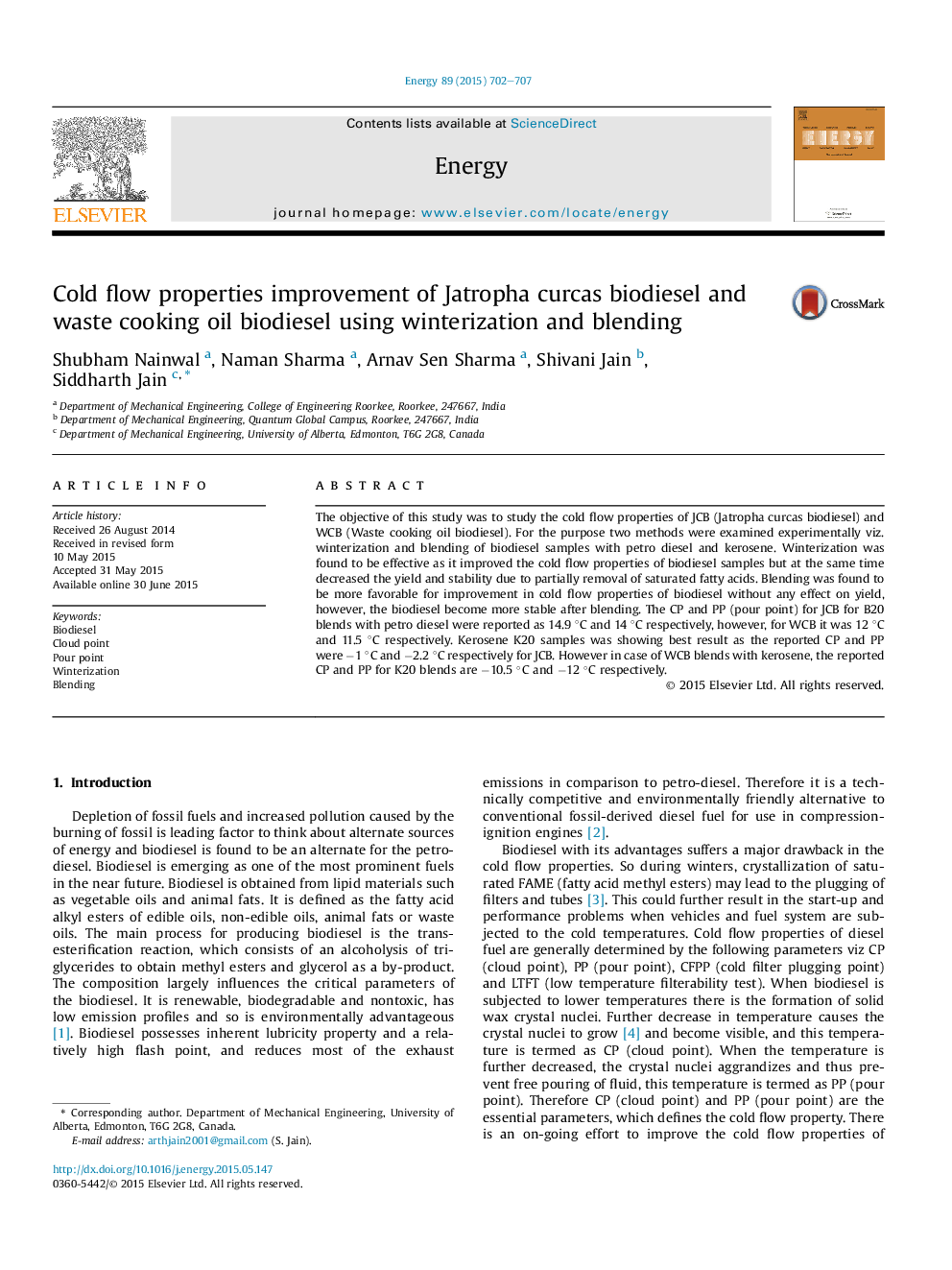| Article ID | Journal | Published Year | Pages | File Type |
|---|---|---|---|---|
| 1731943 | Energy | 2015 | 6 Pages |
•Cold flow properties of biodiesel from non-edible resources have been studies.•Winterization and blending is used to make biodiesel cold flow properties better.•Blending is found better than winterization.•The variation in fatty acid % is investigated at each step of winterization.
The objective of this study was to study the cold flow properties of JCB (Jatropha curcas biodiesel) and WCB (Waste cooking oil biodiesel). For the purpose two methods were examined experimentally viz. winterization and blending of biodiesel samples with petro diesel and kerosene. Winterization was found to be effective as it improved the cold flow properties of biodiesel samples but at the same time decreased the yield and stability due to partially removal of saturated fatty acids. Blending was found to be more favorable for improvement in cold flow properties of biodiesel without any effect on yield, however, the biodiesel become more stable after blending. The CP and PP (pour point) for JCB for B20 blends with petro diesel were reported as 14.9 °C and 14 °C respectively, however, for WCB it was 12 °C and 11.5 °C respectively. Kerosene K20 samples was showing best result as the reported CP and PP were −1 °C and −2.2 °C respectively for JCB. However in case of WCB blends with kerosene, the reported CP and PP for K20 blends are −10.5 °C and −12 °C respectively.
